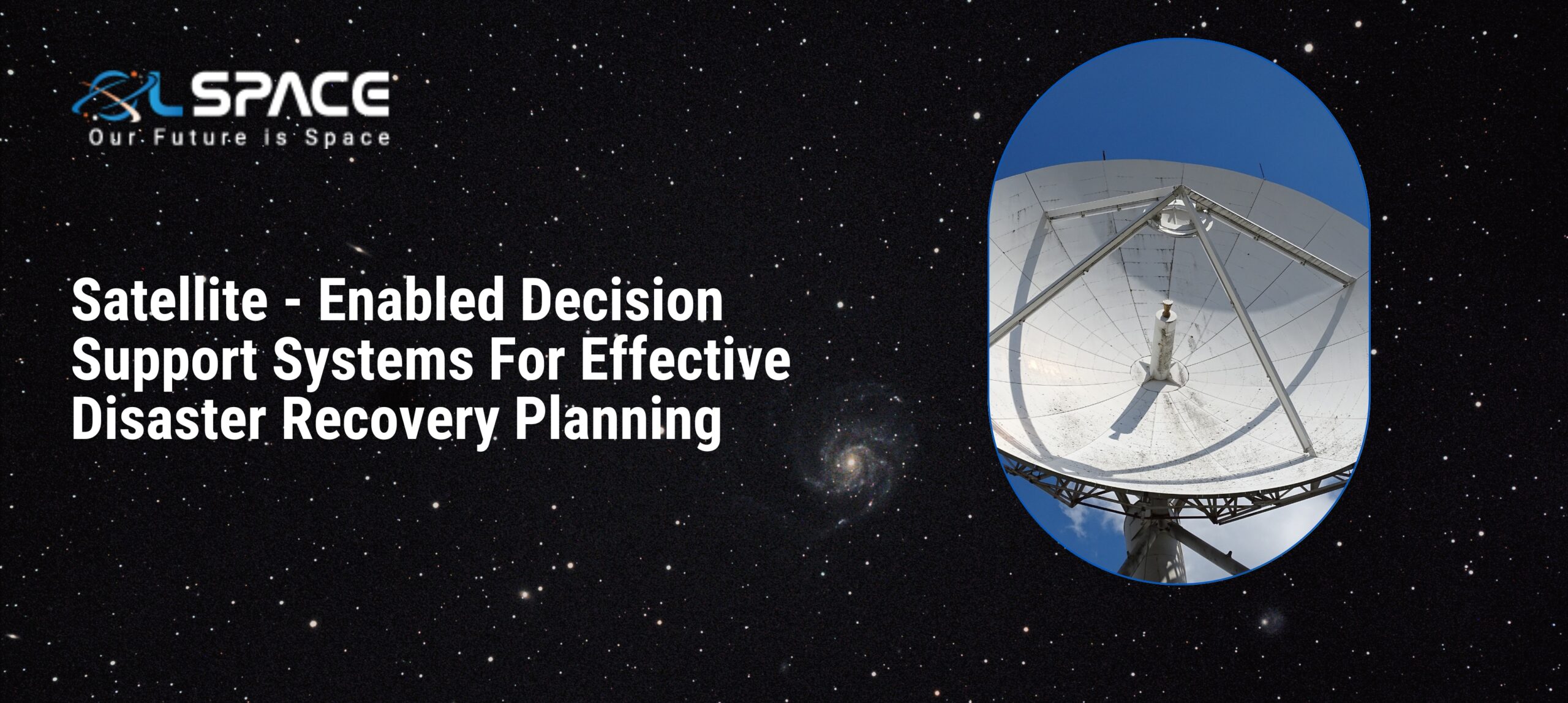06 June 2023
Satellite-Enabled Decision Support Systems for Effective Disaster Recovery Planning

Disaster recovery planning is a critical aspect of managing the aftermath of natural and man-made disasters. It involves coordinating efforts to restore infrastructure, provide aid, and ensure the well-being of affected communities. In recent years, satellite-enabled decision support systems have emerged as valuable tools for enhancing disaster recovery planning and response. These systems leverage satellite imagery, data analytics, and remote sensing technologies to provide real-time information and actionable insights. In this blog post, we will explore the benefits of satellite-enabled decision support systems and how they contribute to effective disaster recovery planning.
Rapid Assessment and Situational Awareness Satellite imagery and remote sensing technologies provide a comprehensive and up-to-date view of disaster-affected areas. Decision support systems integrated with satellite data can rapidly assess the extent of damage, identify critical infrastructure disruptions, and map affected regions. This information enables decision-makers to gain situational awareness, prioritize response efforts, and allocate resources effectively. By having access to real-time data, authorities can make informed decisions and respond promptly to address immediate needs during the recovery phase.
Infrastructure Monitoring and Damage Assessment Satellite imagery plays a vital role in monitoring and assessing infrastructure damage caused by disasters. Decision support systems can analyze high-resolution satellite images to identify damaged buildings, roads, bridges, power lines, and other critical infrastructure elements. This information helps planners and recovery teams prioritize repairs, estimate reconstruction costs, and develop recovery timelines. Satellite-enabled systems provide a visual representation of the damage, allowing stakeholders to make informed decisions regarding resource allocation and restoration efforts.
Environmental Monitoring and Hazard Mapping Disasters often lead to environmental changes and increased hazards in affected areas. Satellite-enabled decision support systems can monitor environmental conditions, such as changes in land cover, water quality, and air pollution, following a disaster. By analyzing satellite data, decision-makers can assess the potential risks and hazards, such as landslides, flooding, or contamination, and develop mitigation strategies accordingly. Hazard mapping based on satellite information allows for proactive planning and helps prevent future disasters or reduce their impact.
Population Tracking and Needs Assessment During the recovery phase, understanding the needs and movement of affected populations is crucial for providing effective assistance. Satellite-enabled decision support systems can track population movements, assess displacement patterns, and identify areas with the highest concentration of affected individuals. This information aids in determining resource allocation, establishing temporary shelters, and facilitating the delivery of essential supplies and services. By incorporating satellite data into decision support systems, authorities can ensure that assistance reaches the most vulnerable communities in a timely manner.
Long-Term Planning and Resilience Building Satellite-enabled decision support systems not only contribute to immediate disaster recovery planning but also support long-term planning and resilience building. By analyzing historical satellite data, decision-makers can identify recurring patterns, assess vulnerability in specific regions, and develop strategies to enhance resilience against future disasters. This includes implementing measures such as improved infrastructure design, land-use planning, and early warning systems. Satellite-enabled systems provide valuable insights for long-term planning, enabling communities to become better prepared and more resilient to future disasters.
Conclusion Satellite-enabled decision support systems have revolutionized disaster recovery planning by providing real-time information, data analysis, and actionable insights. By leveraging satellite imagery, remote sensing technologies, and data analytics, these systems offer rapid assessment, infrastructure monitoring, environmental monitoring, population tracking, and long-term planning capabilities. Incorporating satellite data into decision-making processes enhances situational awareness, facilitates resource allocation, and supports effective recovery efforts. As these technologies continue to advance, satellite-enabled decision support systems will play an increasingly vital role in enhancing disaster resilience and reducing the impact of future disasters on affected communities.
Join our community and never miss an update! Subscribe to our newsletter and blog to stay up-to-date on the latest trends, tips, and insights in your area of interest. Don’t miss out on exclusive content and promotions. Sign up now and be a part of our growing community!
